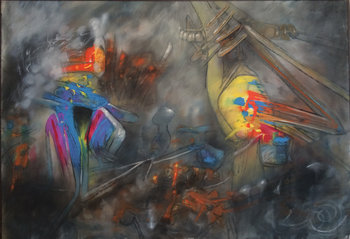
June 6 - September 11, 2024
The Female Gaze | Der weibliche Blick
DIE GALERIE, Frankfurt am Main
With the exhibition The Female Gaze, DIE GALERIE encourages the viewer to venture a change of perspective. The group exhibition featuring twelve female artists draws the attention to female positions in art. The "female gaze" can be understood as a term for a women-specific view both in terms of art production and in relation to the representation of women in art.
The international exhibition presents sculptures by Beate Debus and Sonja Edle von Hoeßle, an installation by Monika Linhard, photographs by Ann-Christine Woehrl as well as paintings and drawings by Rissa, Chunqing Huang, Kim Du Rye, Lita Cabellut, Cathalijn Wouters, Regina Götz, Amy Ernst and Leonor Fini. The juxtaposition of female artists from the gallery with new faces brings together a wide range of different styles, materials and techniques; abstraction and figuration interact with each other and result into new, surprising synergies. Also thematically, the involved artists express individual positions: From the investigation of self-identity to the exploration of the female body in painting and sculpture, from the connection with nature and the environment to the examination of foreign civilisations and socially sensitive women's topics all the way to self-expression through gestural abstraction, each artist directs her attention to very individual fields of interest. The abundance of artistic media in which the artists express their creativity contributes to an extremely diverse and multifaceted presentation. The exhibition at DIE GALERIE reflects the richness and versatility of female art and clearly demonstrates that there is no such thing as a singular "female gaze".
The exhibition will be opened on Thursday, June 6, 2024 at DIE GALERIE.
Take a virtual tour of the exhibition


